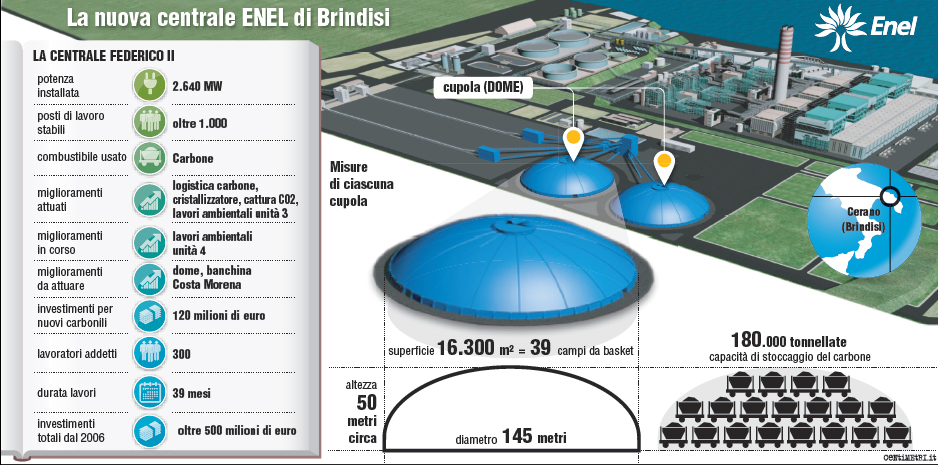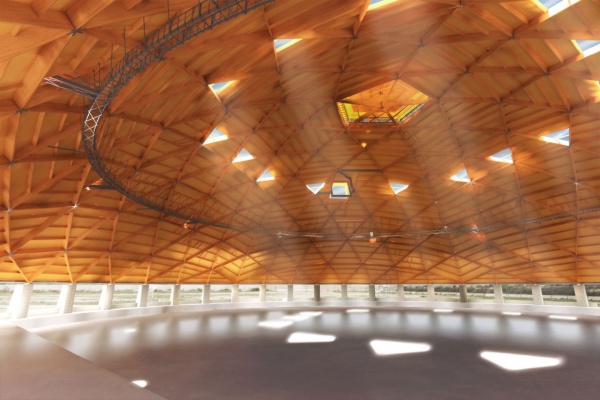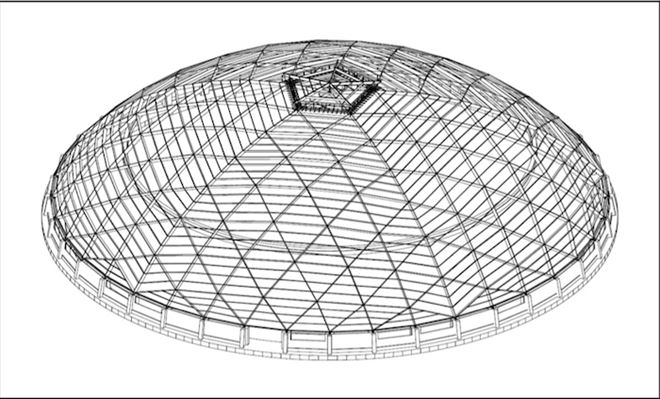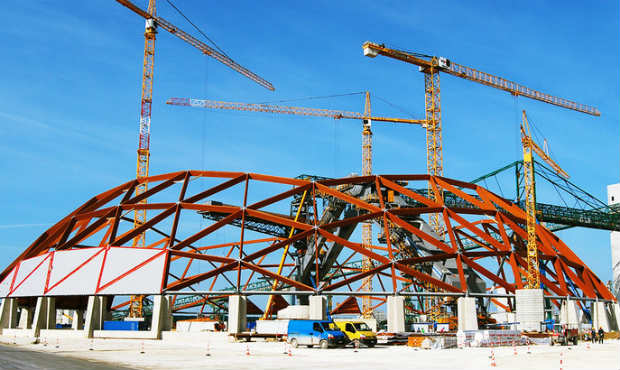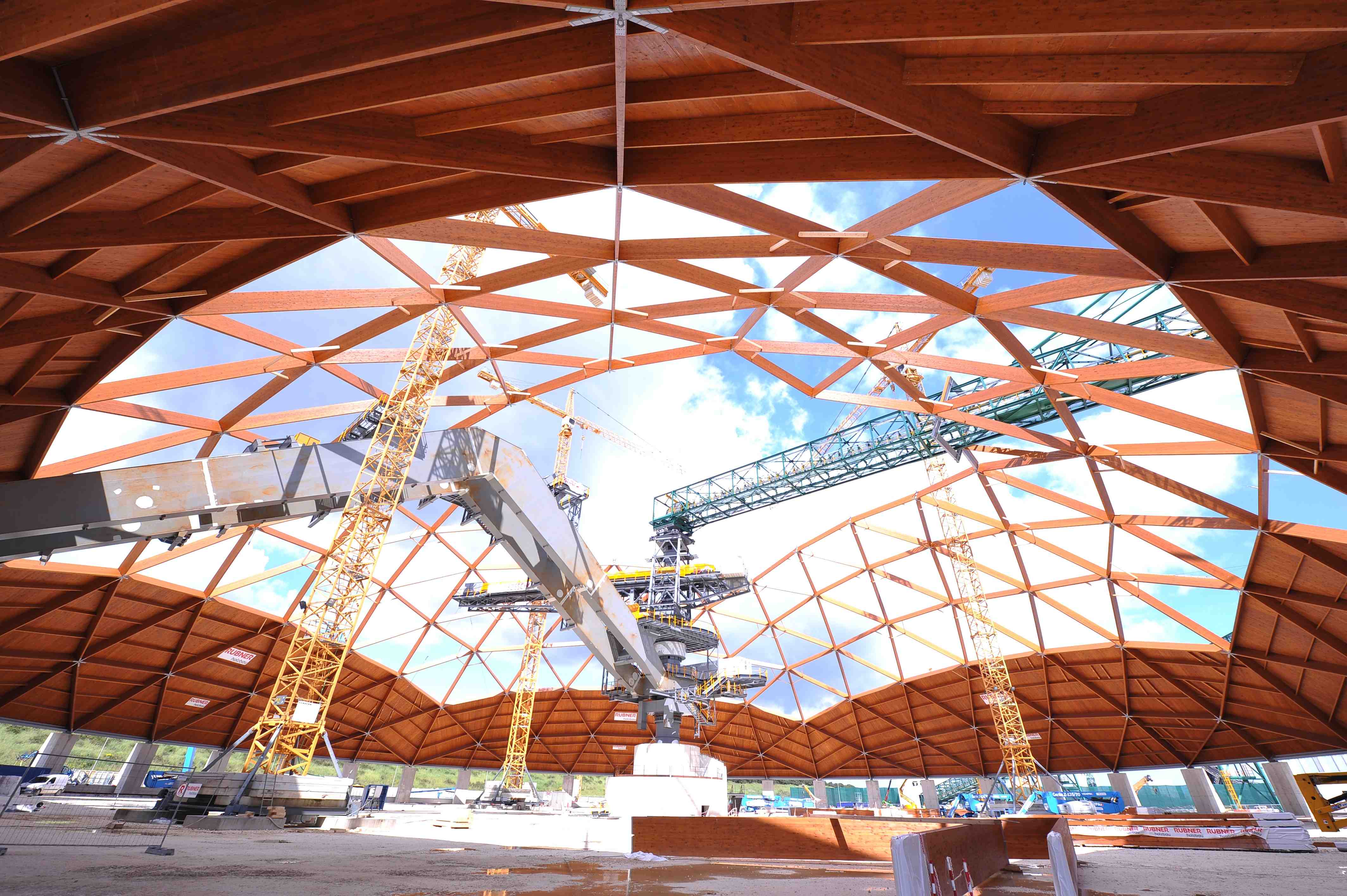In Brindisi, the two largest domes in Europe
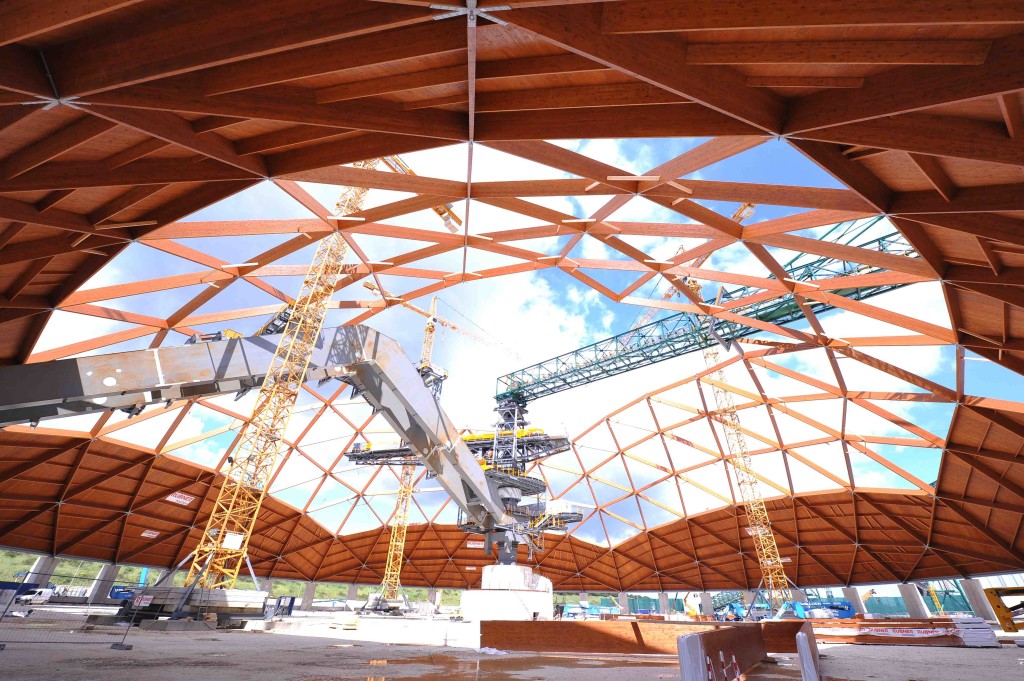
italiaambiente.it
“The two domes” are a “high engineering ” work, as defined by Enel, which will resolve an issue much debated in the territory of Brindisi: the coverage of the Federico II’s carbonyl central.
The project, awarded to Rubner Holzbau, the European leader in construction laminated wood construction with innovative features or particularly sophisticated, consists in the installation of wood dome largest in Europe .
The role of the group in South Tyrol in the project is in full radius, includes the structural design, the entire cover package, stairs, catwalks, the natural ventilation system and the electrical system.
The company is engaged with 30 editors, 15 tinsmiths and 3 coordinators, for a site characterized by centralized coordination of the assembly and a high degree of prefabrication .
The two hemispherical structures have exact diameter of 143 meters, height of 46 and 49 meters, with a total area of 22,000 m2. For each dome are employed 1,548 m3 of glulam, 22.000 m2 of X- Lam and 192.000 kg of steel .
Each dome has 5 main areas that surround it in so many sectors alike. The main beams are rectilinear axis and forming a series of flat triangles. The junction of the main beams is made with a type of node patented by the study of engineering works in wood “Holzingenieurbüro Lüning Doetinchem ( Nl ) . The supports of the elements of laminated wood on concrete structures are connected by a ring of steel traction to limit the horizontal loads on the sub-structures .
The structure of the laminated wood dome lies on 40 ferroconcrete supports, 6.2 m high . The wind pressure coefficients were determined by performing tests in the wind tunnel. The wind tunnel tests were conducted by Peutz bv Zoetermeer .
The main beams are 113 cm high, their thickness and the strength class vary according to the loads to which they are subjected .
In collaboration with the Holzingenieurbüro Luning , the University of Trento (Prof. Piazza ) , Kit Karlsruhe (Prof. Blaß ) have defined the following test criteria:
– Tensile testing of free – beam connecting bracket
– Compression testing of the connection beam – pipe central
– Bending tests on single-axis system – beam steel nodes with three methods: test at four points concave and convex test at three convex side .
As has happened so far for structures of this type, is expected to be built with the technique of progressive advancement cantilever. The nodes of connection to the ferroconcrete works are therefore designed and sized to withstand the loads resulting from the installation. This type of installation is performed from the inside of the dome with the help of mobile cranes or crane construction and the use of aerial work platforms .
Once positioned the beams on special supports have been connected by means of screws to the whole thread connecting plates. The system thus launched and released from the strut stabilization, it is stuck on the head of the spurs in ferroconcrete and is able to balance itself does not require temporary works.gal

